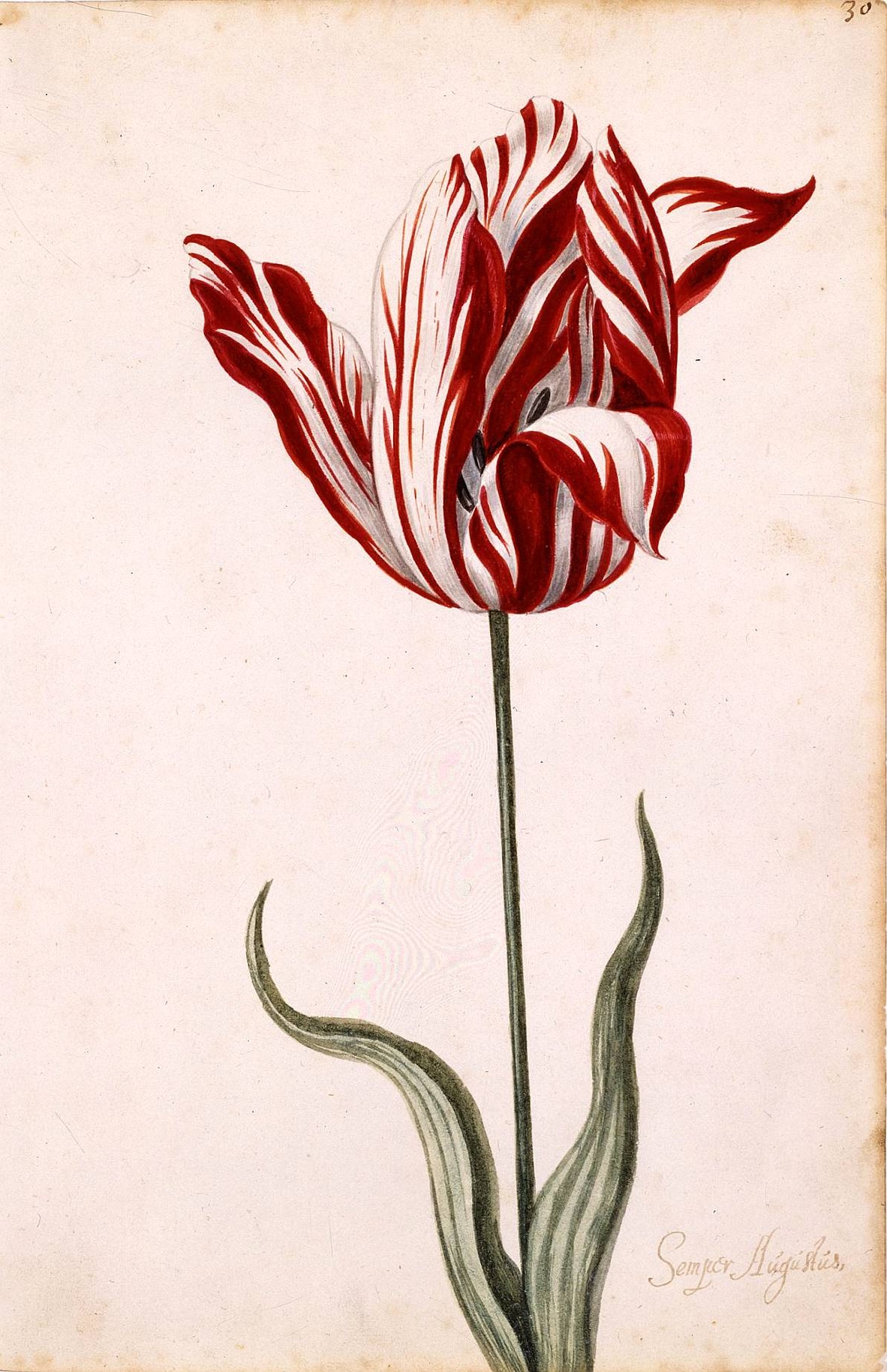Phytoplasma infections commonly cause symptoms of phyllody (the transformation of flowers into leaf-like structures) and virescence (the production of green flowers). Much like virus-induced tulip color breaks*, phytoplasma infection of poinsettias is commercially valuable.
 Modern tulip color breaks (irregular stripes) are actually caused by a genetic mutation (not viral infection), which is much better for long term health of the plant. I don't know if similar genetic improvements have been made to poinsettias.
Modern tulip color breaks (irregular stripes) are actually caused by a genetic mutation (not viral infection), which is much better for long term health of the plant. I don't know if similar genetic improvements have been made to poinsettias.*The most famous color break tulip, Semper Augustus (pic), marked the peak of the speculative bubble known as tulipomania. In one famous account, a single tulip bulb was supposedly sold for "two lasts of wheat, four lasts of rye, four fat oxen, eight fat swine, twelve fat sheep, two hogsheads of wine, four tuns of beer, two tons of butter, one thousand pounds of cheese, a bed, a suit and a silver cup!"

Whoa! How cool! I never knew a pathogen was involved in poinsettia. I wonder if compact, free-branching cultivars of other species are pathogen induced as well?
ReplyDeleteit's possible! it's definitely one of those things that everyone assumes is rare until they actually start to look for it. phytoplasmas and (many) viruses are sap-transmitted, so if you had any cultivars you wanted to check, you could transmit the infection by grafting a "sick" plant onto a "healthy" one.
ReplyDeletea similar disease is common in goldenrod (see the pic in my linked post), and a few ornamental plants (e.g. asters)